Containers, flotsam, other ships: Collisions at sea - how to avoid them, what to do in an emergency
Jan Zier
· 22.07.2023
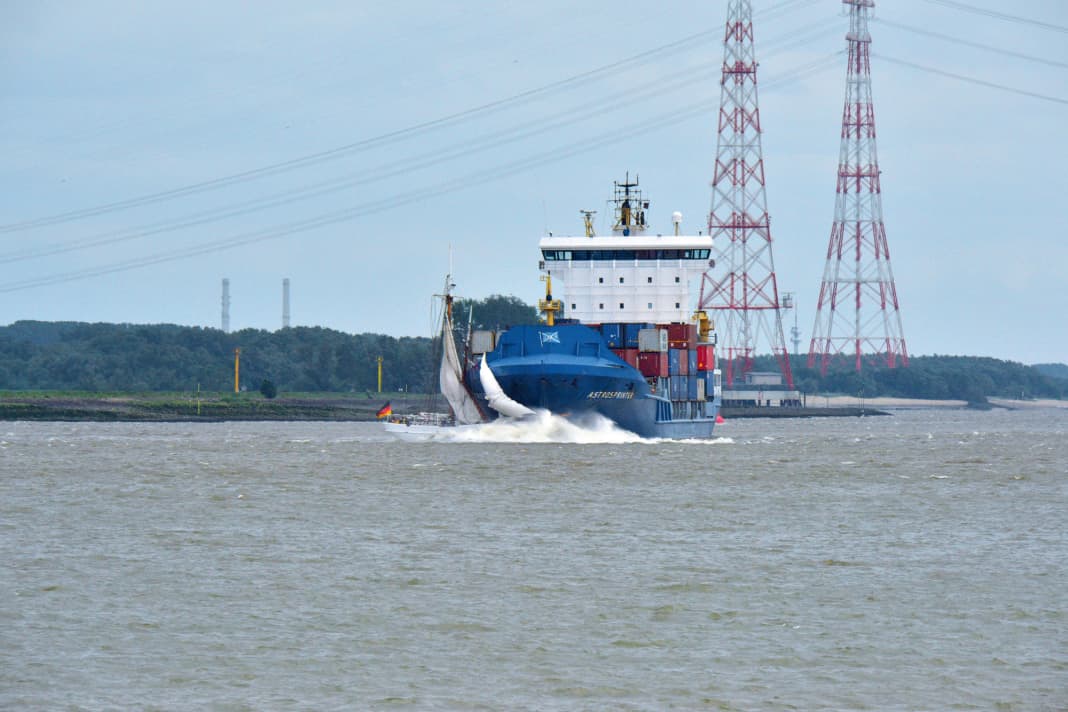





The voice is surprisingly composed when the sailor calls Volker Lücke, his lawyer in Hamburg. The skipper is calling from the bridge of a container ship. It had just rammed into him and his yacht had just sunk in the sea. It is every sailor's nightmare.
Boris Herrmann also had to go through this at the last Vendée Globe, when he collided with a Spanish fishing boat shortly before the finish line in the middle of the Bay of Biscay. His "Seaexplorer - Yacht Club de Monaco" suffered serious damage, but Herrmann was able to save himself in fifth place in the end. The solo sailor not only had AIS on board, but also a broadband radar and "Oscar", a system that uses video and infrared cameras to scan the sea surface.
How do sailing yachts still collide time and again?
Steffen Herz is someone who knows both sides: the perspective of the cruising sailor below as well as that from above on the bridge of a large cargo ship. The 55-year-old long-distance sailor got his first Opti at the age of four and now sails for several weeks a year on charter yachts, mainly in the Baltic Sea. He has sailed as captain of various ferries, including high-speed catamarans.
Herz has been working as a pilot on the Baltic Sea between Rostock and Wismar since 2007. He doesn't remember many, but does remember several "dangerous encounters" between sailors and commercial vessels. In Wismar, for example, he says, a sailor once left the harbour at night and sailed into the middle of the fairway without any need. The freighter that Herz was guiding on a collision course had to rely on the depth of the centre of the fairway. It swerved anyway and ran the risk of "being sucked in by the shallow water", as Herz reports.
Herz is someone who promotes greater understanding and mutual consideration: "The sea is there for everyone," he says. His tip: "Put yourselves in the other person's shoes. And show that you've seen them." For example, by changing course in good time "by at least 15, preferably 20 degrees", he recommends.
Floating containers and co.- the ufos of the seas
Collisions with unidentified floating objects (UFOs), such as during the Vendée Globe, also cause a stir in the sailing world. In 2020, top favourite Jérémie Beyou collided with flotsam and had to turn back. Sam Davies also collided with a UFO, as did Sébastien Simon the day before. In 2016/17, Alex Thomson, who was in the lead, was hit in the middle of the Atlantic, while Thomas Ruyant was hit in the Pacific and his yacht threatened to break apart. Kito de Pavant had to be rescued because almost the entire keel of his yacht was torn off in a collision. The list goes on and on.
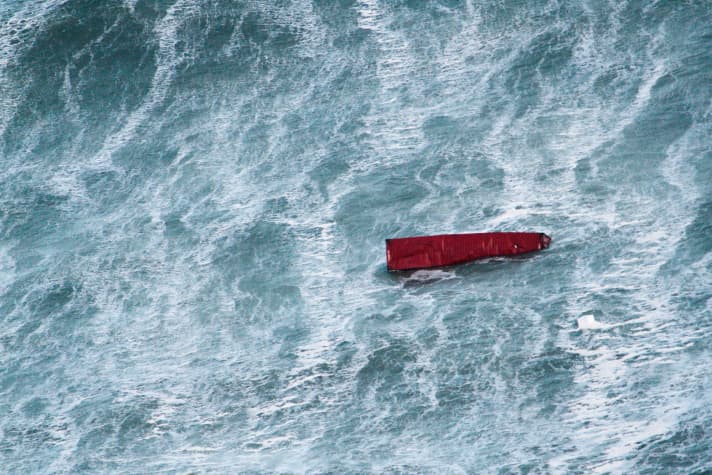
Some people still remember the opening scene from the Hollywood film "All Is Lost", in which a half-sunken container slowly drifts through the picture and the nameless single-handed sailor, played by Robert Redford, on his 39-foot yacht "Virginia Jean" is woken from his sleep by the sudden inflow of water. The container is still in the hull of the ship.
The risk of a collision at sea with a container is low
However, the risk of colliding with a container at sea is "rather low", says Holger Flindt from Pantaenius: "In most cases, steel structures weighing several tonnes sink to the seabed. How quickly this happens depends on many factors, similar to a sinking ship whose bow is still sticking out of the water." It is "extremely rare" for containers to drift just above or even below the surface of the water, as in "All Is Lost".
According to Pantaenius, around 800 collisions involving sailing yachts were reported in 2022, 30 of which were due to collisions with other ships and 50 to collisions with flotsam. "We can't provide any information on the amounts of damage," says Axel zu Putlitz-Lürmann, head of the Pantaenius claims department. But ever since an American shipowner came up with the idea of transporting goods in containers in the mid-1960s, more and more freight has been transported by sea.
The first container ship, the "Ideal X", transported 58 TEU (Twentyfoot Equivalent Unit) in 1956. Today, 20,000 TEU container ships are travelling the world's oceans. Almost 80 per cent of EU exports to non-EU countries are transported by ship, according to the ifo Institute for Economic Research. Around 279 million tonnes of goods were handled in German seaports alone last year, according to the Federal Statistical Office. Shouldn't there actually be many more collisions with UFOs?
Over 1,500 containers are lost at sea every year
It is not easy to say how many containers are lost at sea every year. Shipping companies and their lobby organisations tend to underestimate, while environmental organisations tend to exaggerate. According to the latest figures from the World Shipping Council (WSC), 661 containers were lost overboard at sea last year. This corresponds to 0.00048 per cent of the 250 million containers that are currently shipped every year. According to the WSC, the average loss between 2008 and 2022 was 1,566 containers per year. The WSC is the largest shipowners' association. However, individual accidents stand out from these statistics: in 2020, for example, a freighter lost 1,900 containers in the Pacific, while the "MOL Comfort" even lost 4,293 containers in 2013. And the "MSC Zoe", the largest container ship in the world, lost 342 of its 8,062 containers on a stormy night in the southern North Sea in 2019. But: "Compared to the volume of containers transported, their losses at sea are very low," says Klaus Holocher, Professor at Jade University of Applied Sciences.
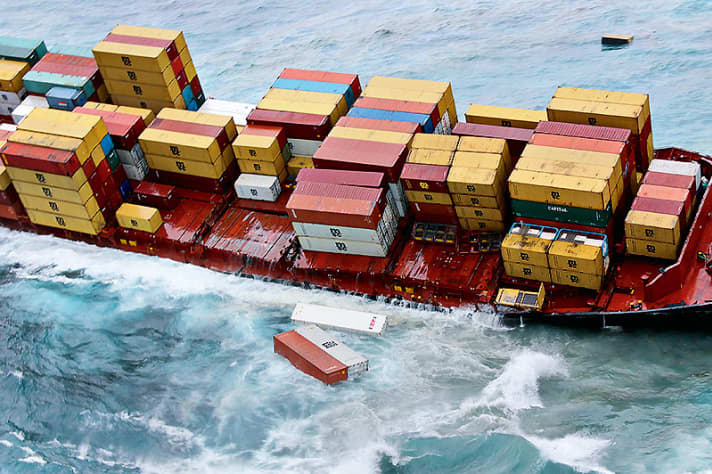
Why do cargo ships lose containers at all?
The Australian Transport Safety Bureau (ATSB) recently analysed how such accidents occur in the first place in the case of the "APL England". In 2020, the ship got into heavy grounding in bad weather on its way to Melbourne on the east coast of New South Wales, resulting in the loss of 50 containers. In its report published at the end of last year, the ATSB found that the securing devices of the steel boxes on deck were in poor condition and their strength was severely reduced due to corrosion. In the prevailing swell, the fastenings failed and the containers went overboard. The investigation also revealed that this condition had only developed after several years of poor maintenance and that the rules for adverse weather conditions had not been observed.
A study by the insurance company HDI points to several factors that lead to such accidents: Container ships have become continuously larger - but the higher the containers are stacked, the larger the surface area for the wind to attack. Especially when it presses against the sides of the container towers. Due to their hull shape, container ships are also particularly frequently affected by exceptionally strong rolling motions. Previous damage and the age of the containers or incorrect stowage and securing of cargo in the steel containers are also a problem. A relatively small number of containers can therefore have a major impact.
And the shipping companies are not always to blame: if the shipper provides incorrect information about the container weight, for example, this can lead to incorrect weight distribution or even to the permitted container weight being exceeded - which can have a domino effect in the event of an accident. And finally, there is a great deal of competition in the cargo shipping industry: in view of the constant time pressure, storm lows are not always sufficiently avoided and captains set sail despite severe weather warnings. Or they steer their ship across the swell despite heavy seas instead of approaching it from a better angle - which would mean taking a diversion. Added to this is a lack of crew experience in individual cases. And assistance systems that show the loads acting on the container stacks are not always used, according to the HDI insurance company.
Trees, pallets or buoys pose the greatest danger to cruising sailors
Nevertheless, from a purely statistical point of view, the risk of a collision with a container at sea is negligible. It is more likely to collide with rubbish drifting in the oceans, nets, tree trunks, rafts, Euro pallets or fishermen's marker buoys. Wreckage from ships also often drifts at sea for a long time and can become a danger. "The number of collisions with other ships, on the other hand, is actually relatively low in normal use," says Andreas Medicus, Managing Director of Hamburg-based yacht insurance company Schomacker. In regattas, this is of course one of the most common types of damage, but the regatta risk is usually also insured.
If, on the other hand, sailors and freighters collide, recreational sportsmen and commercial shipping collide. Sailors will therefore have to deal with professionals in every respect and should organise themselves accordingly. "However, the typical collision damage occurs during mooring and casting off manoeuvres," says Medicus. "Carelessness is often involved, and the wind plays a major role, especially with high-sided yachts. At sea, we find that it is often a case of sloppy manoeuvres, especially when two ships collide in fine weather."
Single-handed sailors are not negligent
Are single-handed sailors who are unable to keep a constant lookout as prescribed a particular danger? Single-handed sailing is demanding - but is not considered grossly negligent per se in case law and in the insurance industry. "Experience shows that single-handed sailors are usually very aware when travelling," says Medicus: "In the Kiel Fjord, for example, you can find them safely on deck."
Pantaenius takes a similar view: "Most single-handed sailors approach risky passages seriously and well prepared." They in particular can benefit from the possibilities of on-board electronics, "but they have to be all the more conscientious about installing controls".
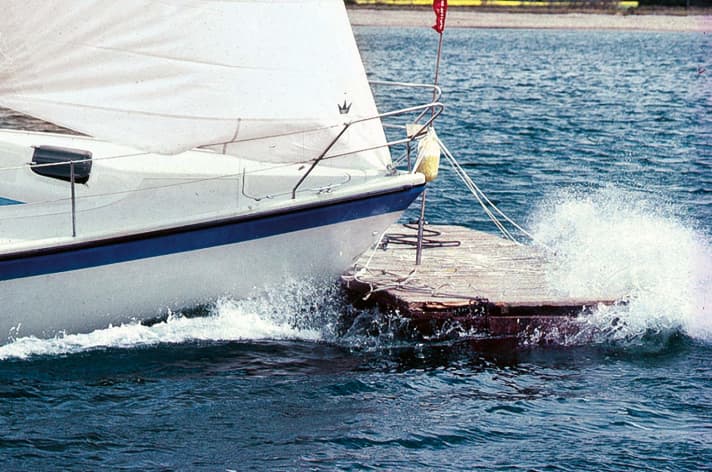
Collision at sea: autopilots and autopilot systems can lead to negligence
However, technology also harbours dangers; the increasing use of autopilots and self-steering systems tempts some skippers to lose sight of their surroundings. What's more, some only sail according to displays and waypoints, which may well be classed as "grossly negligent" in court. And: the technology must also be mastered.
Small displays in particular make it essential to use the zoom function when navigating electronically. "But the level of detail displayed by the plotter changes with the zoom factor," says Axel zu Putlitz-Lürmann. Shoals are then often not recognisable or only insufficiently recognisable. Anyone using the AIS needs a transponder in order to be seen, a receiver is not enough. In addition, flotsam does not appear in the AIS and, like the radar, the system only detects what floats above the surface of the water.
In addition, there is always a certain degree of inaccuracy when determining the position of the GPS system: even today, this can still be up to 200 metres. "On-board electronics are a help, but they need to be monitored and are no substitute for the duty to keep a lookout," says Pantaenius. "As always, a good pair of binoculars is a must," and logs and plumb bobs are also part of this.
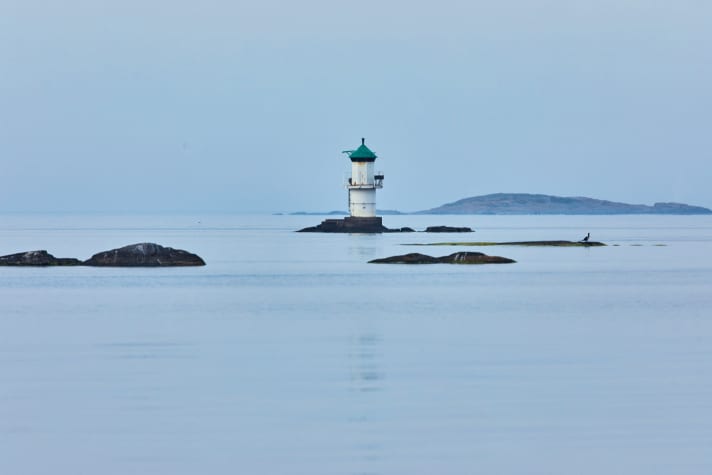
Sailing yachts are difficult for cargo ships to see
The rule that is sometimes taught, according to which sailors can be seen from the bridge of a cargo ship if they can see it themselves, is a misconception, warns pilot Steffen Herz. In theory, this is true. However, especially on the open sea, including the Baltic Sea, many freighters are only manned by one crew member on the bridge. In view of all their duties, they cannot keep a constant lookout. In addition, sailors only produce a weak echo on the radar of a freighter. And they are also difficult to see with the naked eye, especially in rough seas when the white sails disappear in the sea of breaking waves. At night, a tricolour lantern in the masthead helps, but even when the lights of a city are shining in the background, a yacht quickly gets lost in them.
An AIS is therefore "basic equipment" for cruising sailors, especially for those who sail longer distances and also at night. And what does the insurance company advise? "More good seamanship and more common sense," says Andreas Medicus, "would actually help a lot to limit the damage."
What to do in the event of a collision?
- After a collision, the first priority is to secure people and the ship. After that, however, the preservation of evidence should begin immediately. Sooner or later, the question will arise as to who caused the accident and who is liable. Hamburg lawyer Volker Lücke explains what is important:
- Immediately secure all evidence relevant to the collision, such as nautical charts, photographs of the damage, contact details of the other skipper and any witnesses.
- Document a crew list with details of the crew members and their functions/locations at the time before and during the collision.
- When contacting the other party involved in the collision and the authorities, initially only provide the necessary facts. For example, the time and place of the collision, the names of the vessels involved, any damage that has occurred or whether the vessel is unseaworthy, as well as any environmental pollution. Any further written or verbal statements should be omitted. Because once a statement has been made, it can hardly be corrected afterwards.
- Written crew statements should only be prepared after a detailed nautical and legal review of the facts. It makes sense to involve experienced nautical experts and lawyers in this process, as crew statements can play a decisive role in the question of liability - also in court.
- The specific liability depends on the applicable law. Determining this can be difficult. For example, the law of the place of collision, the habitual residence of the opposing party or the insurer may come into consideration. In practice, it is not uncommon for the parties to a collision to agree on a specific choice of law and jurisdiction by means of a "Collision Jurisdiction Agreement". As some countries, including Germany, are members of international conventions on the limitation of liability for property damage and personal injury, a skilful choice of law negotiation can further limit one's own liability.

